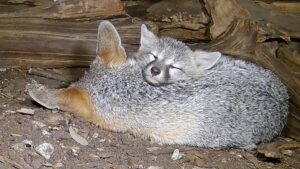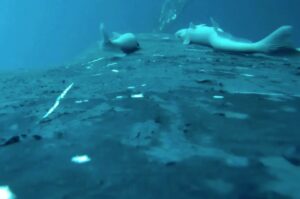The platypus, an animal often cited as evidence that God has a sense of humor, faces an uncertain future — and that is no joke.
Construction of dams in Australia and Tasmania, the species’ only natural habitats, has begun to impact its genetic diversity, according to research published last week. Dams impede platypuses’ ability to migrate, resulting in inbreeding in many populations.
Over two years, the study’s authors looked at dammed and un-dammed rivers and the platypuses that live in them. Platypus populations were four to 20 times more genetically diverse in rivers without dams.
Though the dams don’t destroy habitat, they clearly impede the species’ ability to adapt and interbreed, the paper said.
While platypuses can sometimes walk around the dams on land, that puts them at higher risk of predation from foxes, cats, and dogs.
“When there is no migration between populations, and the populations are small, the genetic diversity within each group drops quickly,” Luis Mijangos, a researcher at the University of New South Wales in Australia and an author of the study, told The New York Times. “If there are beneficial mutations that allow individuals to adapt to climate change, these mutations are not spread to other populations.”

Platypuses glow under ultraviolet light. Scientists don’t know why. Image: Jonathan Martin/NorthlandCollege
The platypus puzzle
As a species, platypuses have always seemed too strange to be real.
When the first stuffed platypus arrived in England from Australia in the 1800s, many believed it was fake. Brits thought it more likely that someone had sewn together a duck with a mole, according to London’s Natural History Museum.
But the platypus’s uniqueness doesn’t end with its appearance. While many know that it’s one of only two egg-laying mammals (along with the echidna), it’s special in other ways, too.
It’s one of the only venomous mammals. Males have a poisonous spur on each hind foot. Researchers believe that the spurs help males compete for mates, according to the Australian Platypus Conservatory.
They also have legs on the sides of their bodies, like a lizard, rather than below like most mammals. Platypuses locate prey by detecting electrical fields through receptors on their duck bills. Although they nurse their young, they have no nipples and feed them through pores in their skin. Instead of teeth, platypuses chew food with pads made of keratin — the stuff in fingernails and hair.
If all that weren’t enough, scientists discovered in 2020 that the species is bioluminescent. Expose their fur to ultraviolet light, and these strange mammals give off a blue-green glow. Scientists have no idea why.
“I was a little flabbergasted to [see] the platypus is biofluorescent,” study lead author Paula Anich told National Geographic, especially since it’s already “such a unique animal”.

A platypus swims in a river in Tasmania. Photo: Shutterstock
Will the platypus survive?
Australian officials have no plans to stop building dams for the sake of platypus populations. As a result, biologists feel worried about the species’ survival.
“As far as I am aware,” Dr. Mijangos told The New York Times, “the Australian government is taking no steps to reduce the consequences of dams on platypuses.”
The World Wildlife Fund-Australia is working on a project to restore a wild platypus population in the Royal National Park in Sydney. But while the WWF plans to pursue other re-wilding projects in the future, none involve dealing with the dams.
Though platypuses aren’t technically endangered, the Australian Conservation Foundation thinks that they’re at risk of extinction. Their habitat has shrunk by 22 percent in the last 30 years. That is an area three times the size of Tasmania.
It’s clear even from the scientific language of last week’s dam study that researchers want to live in a world where platypuses still exist.
“The uniqueness and rarity of platypus features and its evolutionary distinctiveness make it arguably one of the most irreplaceable mammals existing today,” the study said.






